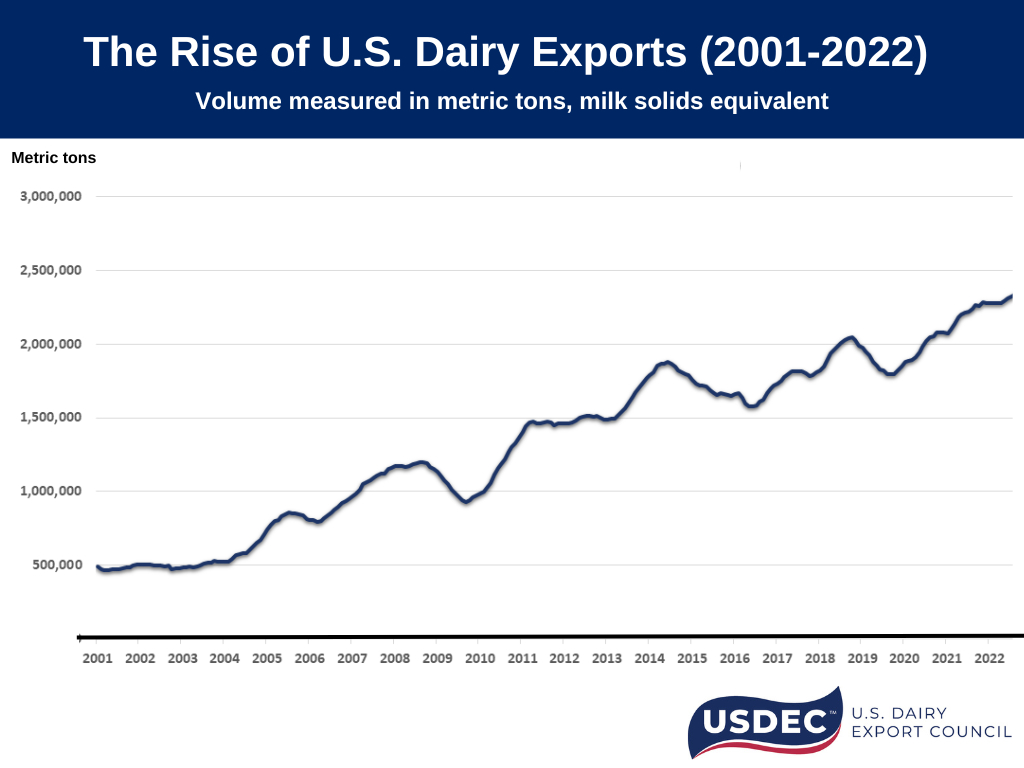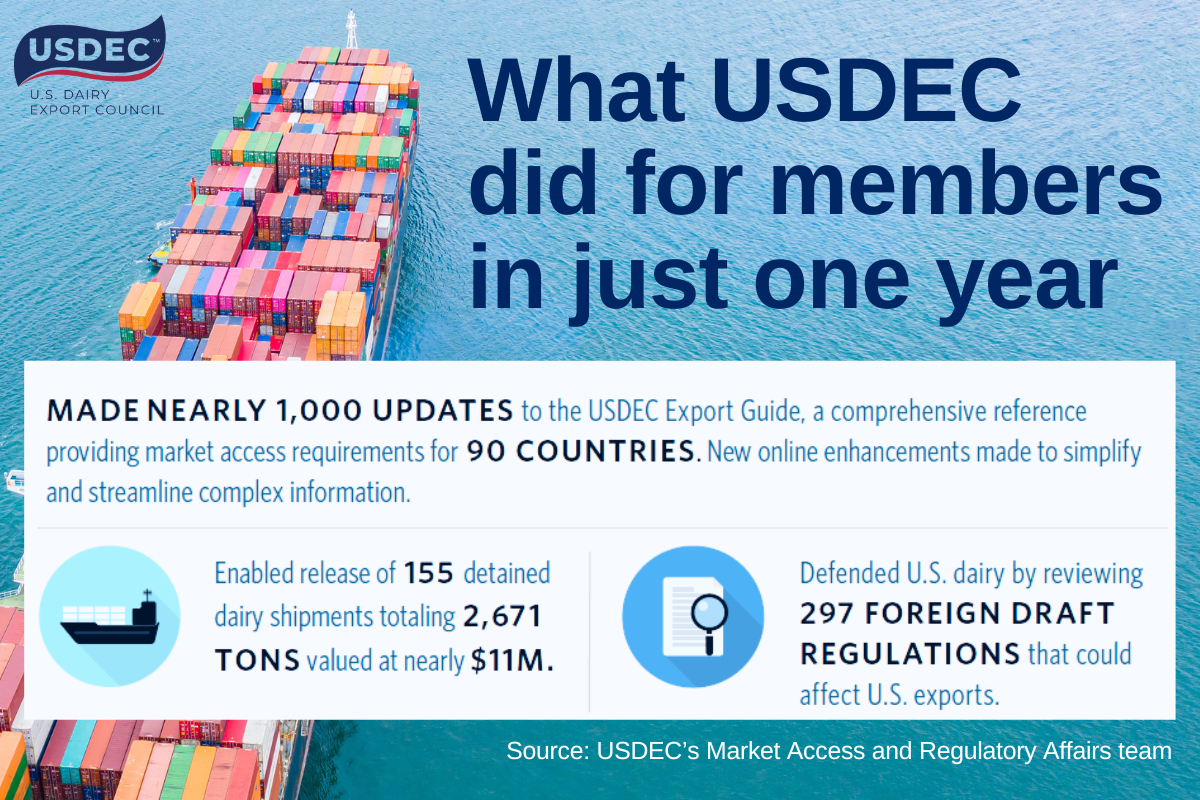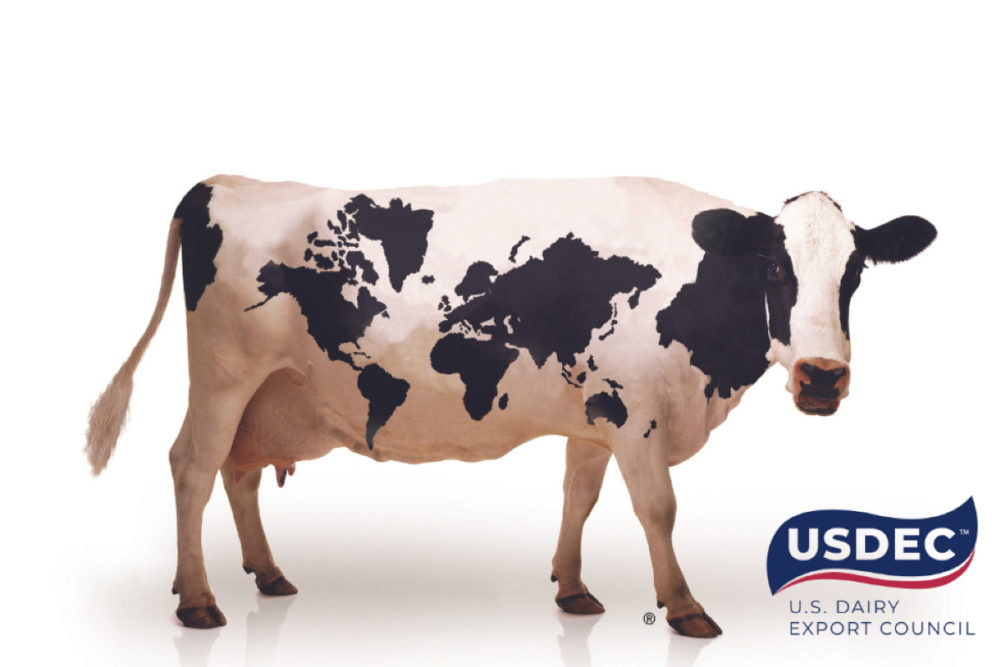Dairy exporting might sound straightforward on the surface, but the reality is far more complex. It’s a specialized endeavor that demands deep industry knowledge and understanding of technical requirements, ranging from international health and safety regulations to varying packaging restrictions. Price and market sensitivities, as well as cultural preferences add further layers of complexity.
While these barriers can seem daunting, exporting is a vital strategy for dairy companies looking to expand their business and strengthen the industry at-large. Domestic sales can only take a company so far; the real growth opportunities often lie in a consistent export strategy.
Additionally, exporting plays a pivotal role in preventing domestic price collapse. By diversifying their customer base globally, dairy companies can stabilize revenues and maintain profitability, even in the face of domestic market fluctuations. Combined, the potential to grow and strengthen businesses and the industry makes exporting not just an option but a necessity for U.S. dairy.
While developing an export strategy requires nuance, there are fundamental principles that will benefit any dairy company wanting to start or expand its approach. Let’s explore three essentials to dairy exporting.
1 – Take a Targeted Approach
In exporting, particularly when starting out, it’s not about having the biggest reach. Rather, it’s important to take a targeted approach that identifies a market or a few markets that best align with the business. When determining the right market to prioritize for exporting, it’s critical to consider cultural nuances and consumer preferences, as well as regulatory requirements and growth potential.
For example, Southeast Asia has been a growing market for U.S. dairy exports over the past few years. But economic challenges and increasing competition hampered exports to the area in the first half of 2023. That doesn’t mean it isn’t viable for exporting, however, as every market inevitably experiences ups and downs.
Most importantly, companies should analyze year-over-year performance to determine the prospect of a market. Southeast Asia, for instance, is forecast to have abundant long-term potential, despite the declines seen in 2023.
Beyond growth potential, dairy companies must account for consumer preferences, cultural needs and regulatory requirements. A market with high growth potential will mean little if the products being exported don’t line up with those factors. In Indonesia, for example, consumers tend to prefer sweet cheese, whereas consumers in other areas of South Asia favor savory, meltable cheeses.
Fundamentally, to be successful internationally, exporters must meet a market’s needs and adapt to consumers and manufacturers in that market as opposed to simply selling what has worked domestically.
Gathering and analyzing the breadth of insights needed to determine a strong export strategy can seem overwhelming. But support can be found through the US Dairy Export Council (USDEC), which serves as a strategic advocate and resource for its members. It works to open and grow international markets for U.S. dairy products, supporting opportunities to increase exports and access a broader customer base around the world. As one example, USDEC’s Economics Team analyzes dairy markets, commercial activities and the macro trends affecting the U.S. dairy community. Along with access to these insights, they provide members with strategic counsel to identify the right export opportunities that align with their company’s capabilities.
 Source: © US Dairy Export Council
Source: © US Dairy Export Council 2 – Practice Patience and Flexibility
The path to export success often takes time and dairy companies must be patient and willing to adapt when necessary. Fluctuating markets and changing regulations mean export success is a long game that requires exporters to be open to adjusting their strategy.
Even established exporters should be prepared to be flexible. For instance, a shipment may get detained at the point of entry for any number of reasons, even if the company has previously exported to the country. Non-tariff trade barriers, like issues with labeling or plant registrations, can change and require exporters to adapt shipments for the future.
When these types of obstacles arise, USDEC can help exporters navigate them. USDEC’s Market Access and Regulatory Affairs (MARA) Team, for example, has deep expertise and on-the-ground contacts to help identify the challenge and determine the right course of action to resolve it. They also provide insights and counsel so exporters can stay abreast of changing regulatory requirements, including giving members access to a regularly updated Export Guide for over 90 countries.
Further, USDEC’s Trade Policy Team works to mitigate risk in the first place by advocating for U.S. dairy in trade negotiations and forums, cultivating allies around the globe, and deploying special projects to preempt barriers and improve U.S. Dairy’s competitiveness.
 Source: © US Dairy Export Council
Source: © US Dairy Export Council
3 – Stay Consistent
Once a company has started exporting in a market, the key to maintaining success is ensuring the product is consistently available. It can cause uncertainty among consumers and export partners if a product launches in a market and suddenly becomes unavailable.
Building and nurturing a network of export partners and being consistent in those relationships is also critical. Most companies will inevitably encounter moments of disruption. For example, supply chain issues during the pandemic caused many companies to reduce or pause exports. But companies that establish dependability and deploy transparent communication with in-market export partners can maintain success and survive inevitable fluctuations.
Before relationships can be nurtured, however, they need to be established. USDEC can help dairy exporters do this by making introductions to essential export partners across markets. And industry events like the IDF World Dairy Summit, and others like trade shows within specific countries and regions hosted by USDEC, provide prime opportunities to meet members of the dairy export community, gain new perspectives and establish connections.
Dairy exporting is not simple, but it holds immense value for individual dairy companies and the U.S. dairy industry alike. By taking a targeted approach, practicing patience and flexibility, and staying consistent, dairy companies can navigate the complexities of international markets. Critically, USDEC stands as a valuable ally in the journey, offering a wide range of services to help dairy companies overcome barriers and thrive in the global marketplace.
To learn more about dairy exporting and how USDEC can help, visit usdec.org.


